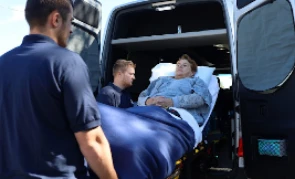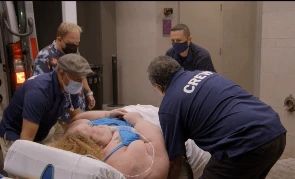State to state medical transport certainly makes life easier for people who have to travel long distances to get to a hospital. They’re more comfortable for the elderly than, say, air transportation. And the fact that they do the specific job of getting patients to and from medical appointments makes it more likely that they’re better equipped to handle the peculiar demands of driving patient passengers to their destinations.
If you’re going to use this service, there are things you will still have to take care of yourself, to make the trip go on smoothly for you (or for whoever will be transported under your watch). Here are some of the measures you should take before you go on a journey in a medical transport van.
You don’t want to miss anything. Especially if you’ll be staying long hours in the van or spending even more time at the location to which you’re traveling.
If you’re on medication when the trip happens, ensure that you take your medicines with you. Your medical kit could also include things like antacids, painkillers, and a band-aid.
As for luggage cases, you may want to go for something with wheels, so you don’t have to bear a lot of weight.
The skill, courteousness, and care of the people who work at the service you use will greatly determine how your journey will be. If they’re trained caregivers and have a record of valuing the dignity of patients on board their vehicles, they will very likely deliver an experience that you will find comfortable and reassuring.
Don’t forget to take the relevant information with you when you travel. Things like your doctor’s letter and contact information, healthcare and travel insurance information, and a list of your current illnesses. Also have the names of medications you’re on at the time of your traveling, as well as any other thing that your physician or any other relevant party would want to see.
It’s advisable that you have travel insurance with pre-existing illness cover. It’s the sort you’d want in place when you’re using a state to state medical transport.
You may also be contacting your travel insurance provider to assists with finding appropriate medical care in the location you’re traveling to, ahead of your arrival.
If you’re using wheelchairs, you’ll want to be sure that the service you opt for has wheelchair vans that cater to your needs. They should also be able to care for patients who need to be taken in a stretcher and provide comfortable sitting positions for those who would want to rest their bodies that way.
Long-distance medical travels don’t have to be an anxious affair. The tips we have provided here should help you make them less bothersome and much easier for you or anyone who embarks on them under your watch.

When choosing a medical transport service provider, you must ensure to choose one that not only focuses on getting you to your destination, but also prioritizes using the safest, most conducive, and most efficient sets of vehicle fleets and equipment to do the job.

ACC Medlink appeared on the TLC television network reality show “1000 LB Sisters” to transport one of the cast members from Ohio to a doctor in Kentucky. ACC Medlink, four of its employees, and the journey they took with Tammy Slaton were featured in episode 6 of season 4.

ACC Medlink is proud to announce the addition of a new line of elite medical sprinter vans to our long distance medical transport fleet. This addition will allow ACC Medlink to continue to provide superior service and outstanding care for those in need of medical transport out of state...
